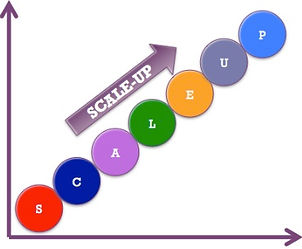

Yuksel Research Group
Tasks
Design and simulation of hydrothermal electrolysis equipment for the degradation of biomass into value-added chemicals
The first objective of this proposed work is to design and simulate of hydrothermal electrolysis equipment in which organic materials in aqueous solution (with any suitable electrode) can be electrochemically converted into other forms using only sub-critical water without any organic solvent. The task in order to achieve this objective is fairly straightforward. Commercially available software packages at the host institution such as Matlab®, CHEMCAD® and Comsol Multiphysics® will be employed to design and simulate devices. The simulation results will be compared to today’s commercially available methods. The selection of the device designs that will be carried over to the next stage for manufacturing should tolerate fabrication errors and simulation results should yield an increase in device efficiency at least 50% compared to the commercial techniques.

The main goal of this research effort is to develop an economically viable and scalable environmentally friendly hydrothermal electrolysis technique to convert biomass sources into high value added chemicals to improve the performance of current hydrothermal processes, as well as enabling new device designs that can take advantage of this integration. The method needs to be compatible with and complimentary to conventional advanced oxidation processes. In order to successfully demonstrate an economically viable and scalable value-added chemicals production method from biomass, the following objectives needs to be achieved:
Decomposition of biomass into building-block chemicals by hydrothermal electrolysis technique
As the next objective, by using the new hydrothermal electrolysis device designs, Dr. Yuksel will be employed for decomposition of biomass into its building-block chemicals such as fumaric acid, 3-hydroxy propionic acid, aspartic acid, glycerol, glutamic acid, levulinic acid, etc. Dr. Yuksel and her research group will examine the synthesis of value-added chemicals from biomass for into two-part pathway. The first part is the transformation of biomass source to the building blocks. The second part is the conversion of the building blocks to more valuable chemicals or families of derivatives.


Synthesis of value-added chemicals from biomass building-blocks
This part will be a process development and optimization work that will be conducted by Dr. Yuksel. For this objective, Dr. Yuksel will use the building block chemicals produced from the previous step as feeding to synthesize value-added chemicals by hydrothermal electrolysis technique. This task will take much time of the described project timeline.
In order to achieve high yield of desired valuable chemicals from the building blocks without any side reactions, Dr. Yuksel will optimize the reaction conditions such as temperature, pressure, applied current/voltage, etc.
Evaluation of process scale up
The final objective of this research effort is to demonstrate the feasibility of an economically viable green process scale up and manufacturing scheme for hydrothermal electrolysis device designs. Since this effort is an academic effort, the research team does not plan or intent to build a complete fabrication system for commercial scale manufacturing. The research team proposes to evaluate the feasibility of such a system using commercially available tools with data, knowledge and expertise gained during research.
